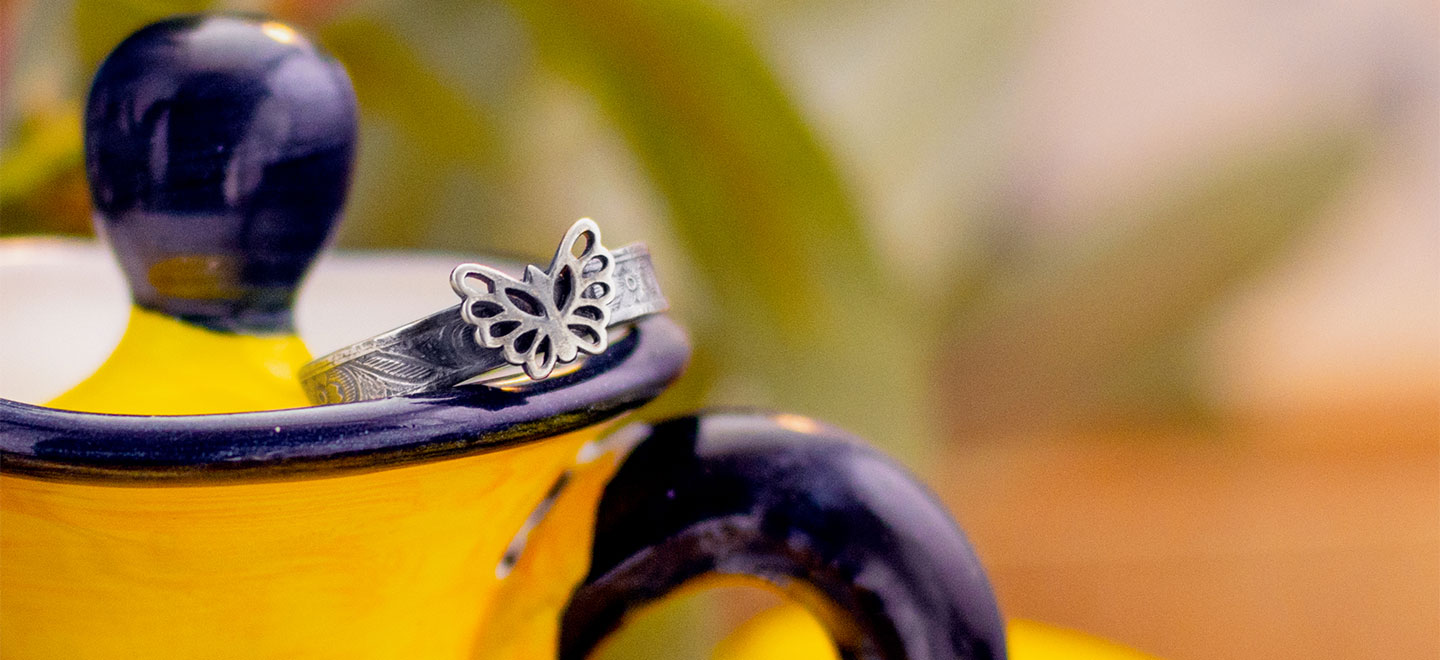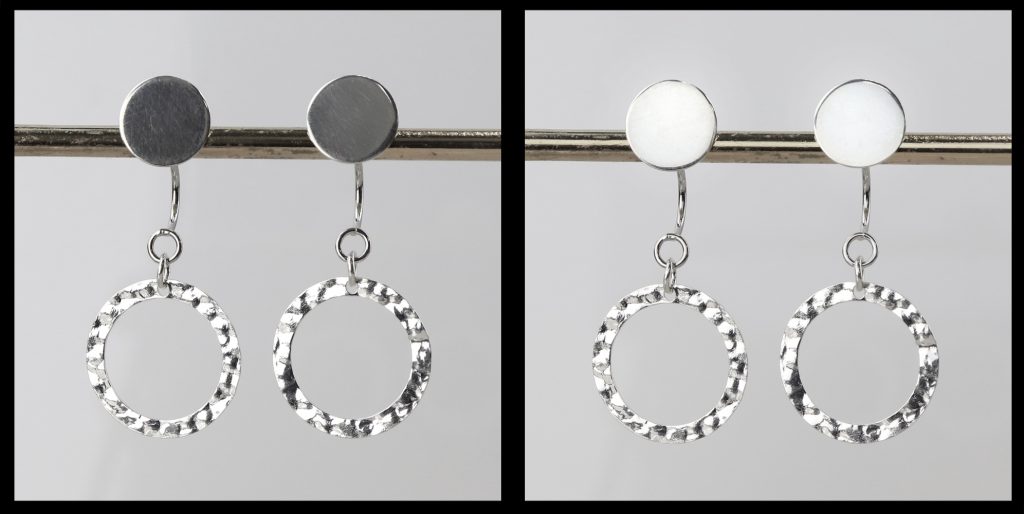Learn about common mistakes in jewelry photography and how to fix them so your product photography shows your product in the best way.
Product photography is an essential part of your jewelry business since it is how you represent your pieces to the online and print world. Quality jewelry photography should represent your business and accurately portray your pieces. Working with a professional photographer who is familiar with product photography, especially jewelry, to shoot your pieces is ideal; however, if you have to DIY your jewelry photography, we have some common mistakes and how to correct them listed below. These tips will also help you to evaluate your current images. We also have some great tips for building your own jewelry photography setup on a budget.
Problem #1: Blurry/Low Resolution Photos
First and foremost, it is imperative that your pieces be clearly visible in your photos - they're what you're selling! When your item is not in focus, customers may be turned off by not being able to clearly see what they are buying. Close up/detail product shots, model shots and beauty shots should all show your item clearly.
Solution:
First, if you can't currently invest in a professional photographer, invest in a good camera. It doesn't need to be a top-of-the-line DSLR, but should have good manual controls (aperture, shutter speed and ISO) and good optical zoom capabilities. Your camera will need to record at the highest resolution, as lower resolution means more pixelated images.
Second, set up shots using a tripod for stabilization or have a place you can rest your elbows while you shoot. The more stable your camera is, the less likely you will have movement in your photos.
Third, set your camera to a low ISO setting: 200 and below for close up/detail shots and 200-400 for model/beauty shots.
Next, remember to be close enough to your item that you won't have to crop the image later. The smaller your item is in the photograph and the more you have to zoom in digitally, the lower the resolution of the final image.
And finally, make sure your piece is completely in focus. Some cameras have focus-stacking capabilities. If yours doesn't, you can use a higher f-stop setting to increase your depth of field. If you're photographing cuffs/bangles and want some of the item blurred to show dimension, make sure the critical points of the item are clear and the blurred parts are still easily recognizable. This is especially true on pieces that may have multiple levels, such as rings.
Below are examples of different levels of sharpness and resolution. The left image is an image that was taken slightly blurry, and to make up for that I sharpened it. You can see that the jewelry looks almost a little grainy, and has more contrast. The middle image was taken on a tripod with low ISO to compose a nice, sharp image. The image on the right was taken at a high ISO setting. You can see how the contrast is lower and the image is slightly grainy.
Problem #2: Bad Lighting/Coloring
Another common issue with jewelry photography is poor lighting. Poor lighting affects the representation of color. Too much light can brighten colors and too much dark can deepen or mute colors. Even if the darker or blown-out look is an artistic choice, it is still important to accompany the stylized image with a clear image that accurately represents your jewelry pieces.
Solution:
Jewelry photography (and generally all good photography) should have some areas of light and dark and a spectrum of tones in between. Too much dark or light can throw off how an item looks, and can hide detail and/or change color appearance. While images will look slightly different as far as color and brightness go depending on what medium the viewer is using (phone, computer, print) it is still important to try to optimize your photos to be as clear and correctly colored as possible.
Be sure to photograph your images with a good light source. If your light is too bright, a diffuser helps to break up the light (a white or light colored semi-opaque piece of cloth or paper work well). You may consider investing in a light tent to shoot in, which range from $10 and up depending on size and complexity. A light tent is a white box made from paper or fabric in which you can set up your items to help control light/light diffusion on the pieces. These are usually collapsible for easy storage.
If you are working with a good light amount but are experiencing a halo of brightness around a piece, which particularly happens with silver, set your camera to a higher f-stop number. This offsets the change in brightness with a slower shutter speed, which will close down the aperture of the lens to restrict how much light is getting in the camera. This should eliminate the problem.
Make sure as you are shooting that the color of your item is well represented in your images. Some post-shooting image corrections may be necessary to make colors of items as true to life.
Below are three examples of lighting. The images on the far left and right may be extreme, however I have seen many sites that have the blown-out beauty shot without a clearly lit detail shot to represent the piece accurately.
Problem #3: Reflection
The last common issue in jewelry photography is reflection. This can be the biggest hurdle to represent your jewelry accurately as metals (especially brightly polished) act like tiny mirrors. The photographer and the setting can all be captured in the reflection. Perhaps the worst offender is shadows that reflect to show the item in black instead of gold or silver.
Solution:
Use awareness and positioning to your advantage when shooting your jewelry. Be aware of reflections in your jewelry, and use positioning to help angle your items for good reflections. In a pinch, use a sheet of paper or aluminum foil to dispel black reflections on your item. A light tent is also beneficial when dealing with reflections as the white walls of the tent will cast a neutral reflection on your piece.
Below is an example of a bad reflection and a good reflection. The image to the left has decent lighting, however the flat studs are difficult to identify as silver. The image on the right was composed with a reflector, bouncing the light onto the flat surface to give it a bright silver look.
Quick Tips for Good Jewelry Photographs
- If possible, hire a professional!
- Invest in a good camera with manual controls and good optical zoom
- Use High Resolution + Low ISO number for clear /optimal images
- Use a tripod or arm rest to make sure your camera is steady when shooting
- Shoot close enough to the piece so you don't have to crop close later
- Use good lighting when photographing pieces
- Invest in equipment like a light tent to help control lighting
- Set camera to a higher f-stop number if a light halo appears around your piece
- Color representation is accurate, if not use post-processing to correct
- Be aware of reflections, and use positioning and/or reflectors to ensure correct representation.
For more tips on product photography:
Jewelry Photography Tips: How To Use Your Phone
Jewelry Photography Tripods: Essential Equipment for Professional Images
Ready for a pro photographer? Check out our tips for hiring one!








